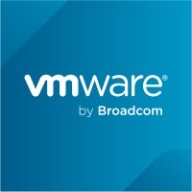


vCenter Configuration Manager and Red Hat Ansible Automation Platform compete in the IT automation and management category. Red Hat Ansible Automation Platform seems to have the upper hand due to its superior features and flexibility.
Features: vCenter Configuration Manager offers robust monitoring, compliance capabilities, and competitive pricing. Red Hat Ansible Automation Platform provides powerful automation, versatile scripting support, and an extensive feature set.
Room for Improvement: vCenter Configuration Manager could enhance scalability, improve reporting tools, and offer better integration options. Red Hat Ansible Automation Platform could streamline its complex initial setup, enhance documentation, and improve user interface intuitiveness.
Ease of Deployment and Customer Service: vCenter Configuration Manager is known for its straightforward deployment process and reliable customer service. Red Hat Ansible Automation Platform requires more complex deployment and better initial support and documentation.
Pricing and ROI: vCenter Configuration Manager is noted for reasonable setup costs and satisfactory ROI. Red Hat Ansible Automation Platform has higher upfront costs but offers better long-term value due to its extensive features.
| Product | Market Share (%) |
|---|---|
| Red Hat Ansible Automation Platform | 16.0% |
| Microsoft Intune | 9.4% |
| vCenter Configuration Manager | 0.8% |
| Other | 73.8% |



| Company Size | Count |
|---|---|
| Small Business | 116 |
| Midsize Enterprise | 46 |
| Large Enterprise | 152 |
| Company Size | Count |
|---|---|
| Small Business | 24 |
| Midsize Enterprise | 8 |
| Large Enterprise | 48 |
| Company Size | Count |
|---|---|
| Small Business | 26 |
| Midsize Enterprise | 11 |
| Large Enterprise | 19 |
Microsoft Intune provides centralized management of mobile devices and applications, ensuring security, compliance, and productivity through integration with Microsoft services like Microsoft 365 and Azure Active Directory.
Organizations use Intune for managing mobile devices and applications, enhancing security and compliance across platforms. With features like single sign-on, conditional access, and zero-touch deployment via Autopilot, it facilitates efficient operations. Intune's scalability, easy enrollment, and capabilities such as remote wipe support diverse device management, offering robust data protection and efficient operation. Despite its features, improvement areas include reporting, compatibility with non-Microsoft devices, and better support for macOS and Linux devices.
What are the key features of Microsoft Intune?
What benefits should users look for in reviews?
In industries such as finance, healthcare, and education, Microsoft Intune is implemented to ensure secure and compliant device management. Companies leverage its capabilities to deploy security policies and manage both corporate-owned and BYOD environments, facilitating a unified approach to data protection and compliance.
Red Hat Ansible Automation Platform is a powerful network automation solution that allows organizations to handle every aspect of their application launch process within a single product. It enables users to share their automations so that teams within an organization can collaborate on various projects with ease. Ansible Automation Platform is designed to be used by all employees involved in the network automation process.
Red Hat Ansible Automation Platform Benefits
Some of the ways that organizations can benefit by choosing to deploy Red Hat Ansible Automation Platform include:
Red Hat Ansible Automation Platform Features
Reviews from Real Users
Red Hat Ansible Automation Platform is a highly effective solution that stands out when compared to many of its competitors. Two major advantages it offers are its automation manager and its comprehensive centralized GUI-based management interface.
MD J., a solution architect at STBL, says, “The automation manager is very good and makes things easier for customers with multi-cloud platforms.”
Aankit G., a Consultant at Pi DATACENTERS, writes, “We like the GUI-based interface for the tower. Before, we only had a command-line interface to run all the Ansible tasks. Now, the Ansible tower provides the complete GUI functionality to run, manage, and create the templates and the Ansible jobs. This includes the code and YAML file we can create. The GUI interface is the added advantage of this solution, including some integration with the different plugins.”
vCenter Configuration Manager is a powerful configuration management tool that is designed to enable organizations to ensure that any environment that they use to conduct business is configured in the most effective possible way. It can automate configurations consistently across virtual, physical, and cloud environments. Additionally, it enables users to place critical functions into the hands of the solution thereby avoiding the possibility that human error will reduce a business’s operations. It also hardens operations against bad actors who look for holes in a user’s security compliance policies that they can exploit.
vCenter Configuration Manager Benefits
Some of the ways that organizations can benefit by choosing to deploy vCenter Configuration Manager include:
vCenter Configuration Manager Features
Reviews from Real Users
vCenter Configuration Manager is a highly effective solution that stands out when compared to many of its competitors. Two major advantages it offers are its intuitive and simple design and its ability to scale according to the needs of its user.
Moses S., a project manager at Swakop Uranium, writes, “The platform is straightforward and user-friendly. A large knowledge base is not required to begin using it.”
Raju P., an Information Technology manager at Sikraft, says, “We can scale the solution as needed.”
We monitor all Configuration Management reviews to prevent fraudulent reviews and keep review quality high. We do not post reviews by company employees or direct competitors. We validate each review for authenticity via cross-reference with LinkedIn, and personal follow-up with the reviewer when necessary.